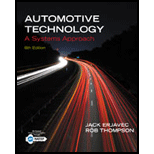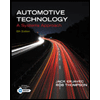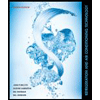
Automotive Technology: A Systems Approach (MindTap Course List)
6th Edition
ISBN: 9781133612315
Author: Jack Erjavec, Rob Thompson
Publisher: Cengage Learning
expand_more
expand_more
format_list_bulleted
Concept explainers
Textbook Question
Chapter 6, Problem 12RQ
Which of the following statements about manifold gauge sets is not true?
- An adapter is required for using R-12 gauges on an R-134a system.
Expert Solution & Answer
Trending nowThis is a popular solution!

Students have asked these similar questions
The suitability of a strain gauge data logger.
Name the two basic types of compression gauges.
Proper functioning of a strain gauge depends on __________a) strainb) stressc) bondingd) length of wire
Chapter 6 Solutions
Automotive Technology: A Systems Approach (MindTap Course List)
Ch. 6 - Explain why testlights are not recommended for...Ch. 6 - True or False? A compression gauge will show the...Ch. 6 - Name the two basic types of compression gauges.Ch. 6 - What tool is used to test engine manifold vacuum.Ch. 6 - Prob. 5RQCh. 6 - Technician A says that a brake drum micrometer has...Ch. 6 - Technician A says that a pyrometer measures...Ch. 6 - True or False? A lab scope is a visual voltmeter...Ch. 6 - Prob. 9RQCh. 6 - Technician A uses a digital volt/ohmmeter to test...
Ch. 6 - Technician A says that a charging station removes...Ch. 6 - Which of the following statements about manifold...Ch. 6 - True or False? A brake shoe adjusting gauge is an...Ch. 6 - When conducting an oil pressure test: Technician A...Ch. 6 - Which of the following conditions can be revealed...Ch. 6 - Technician A uses a high-impedance testlight on...Ch. 6 - Technician A says that a sulfated and plugged fuel...Ch. 6 - The tests conducted by a scan tool can also be...Ch. 6 - When using a fuel injector pulse tester....Ch. 6 - To measure engine cranking current, a DNIM...Ch. 6 - While discussing a clutch alignment tool....Ch. 6 - True or False? The angle of the drive shaft at the...Ch. 6 - Technician A says that ball joints may be pressed...Ch. 6 - Which of the following is not a suitable way to...Ch. 6 - Prob. 25RQ
Knowledge Booster
Learn more about
Need a deep-dive on the concept behind this application? Look no further. Learn more about this topic, mechanical-engineering and related others by exploring similar questions and additional content below.Similar questions
- Which of the following statements about oil gauge circuits is not true? A switch can be used A thermistor can be used. A piezoresistive sensor can be used d An oil pressure gauge may not show actual oil pressure.arrow_forwardTechnician A says that a manifold gauge set can be used during the evacuation of the system. Technician B says that a manifold gauge set can be used to diagnose a problem in the A/C system. Who is correct? Technician A only Technician B only Both A and B Neither A nor Barrow_forwardThe pressure measured with the help of a pressure gauge is called absolute pressure. Select one: True Falsearrow_forward
- The pressure measured with the help of a pressure gauge is called atmospheric pressure. Select one: True Falsearrow_forwardAll gauges operate but read lower than normal: Technician A says that the connection to the instrument cluster may be corroded. Technician B says that the cluster s IVR may be open. Who is correct? Technician A Technician B Both A and B Neither A nor Barrow_forwardWhile conducting a pressure test on an A/C system, the ambient temperature is 80°F, the low-side gauge reads low (8 psi), and the high side also reads low (85 psi). Which of these could cause these readings? Low refrigerant level Normal operation Bad compressor A high-side restrictionarrow_forward
- Before installing a gauge on the high-pressure side of a system, you should do which of the following? A. Turn on the system. B. Turn off the system. C. Adjust the system to a neutral position. D. Have a cylinder approved by the DOT nearby.arrow_forwardName and sketch the three types of plug gaugesarrow_forwardThe fluid used in bourdon gauge calibration Select one: a. No liquid is used b. Used to transfer the pressure from weights to the gauge c. none d. Used to eliminate frictionarrow_forward
arrow_back_ios
SEE MORE QUESTIONS
arrow_forward_ios
Recommended textbooks for you
 Automotive Technology: A Systems Approach (MindTa...Mechanical EngineeringISBN:9781133612315Author:Jack Erjavec, Rob ThompsonPublisher:Cengage Learning
Automotive Technology: A Systems Approach (MindTa...Mechanical EngineeringISBN:9781133612315Author:Jack Erjavec, Rob ThompsonPublisher:Cengage Learning Refrigeration and Air Conditioning Technology (Mi...Mechanical EngineeringISBN:9781305578296Author:John Tomczyk, Eugene Silberstein, Bill Whitman, Bill JohnsonPublisher:Cengage Learning
Refrigeration and Air Conditioning Technology (Mi...Mechanical EngineeringISBN:9781305578296Author:John Tomczyk, Eugene Silberstein, Bill Whitman, Bill JohnsonPublisher:Cengage Learning

Automotive Technology: A Systems Approach (MindTa...
Mechanical Engineering
ISBN:9781133612315
Author:Jack Erjavec, Rob Thompson
Publisher:Cengage Learning

Refrigeration and Air Conditioning Technology (Mi...
Mechanical Engineering
ISBN:9781305578296
Author:John Tomczyk, Eugene Silberstein, Bill Whitman, Bill Johnson
Publisher:Cengage Learning
8.01x - Lect 27 - Fluid Mechanics, Hydrostatics, Pascal's Principle, Atmosph. Pressure; Author: Lectures by Walter Lewin. They will make you ♥ Physics.;https://www.youtube.com/watch?v=O_HQklhIlwQ;License: Standard YouTube License, CC-BY
Dynamics of Fluid Flow - Introduction; Author: Tutorials Point (India) Ltd.;https://www.youtube.com/watch?v=djx9jlkYAt4;License: Standard Youtube License